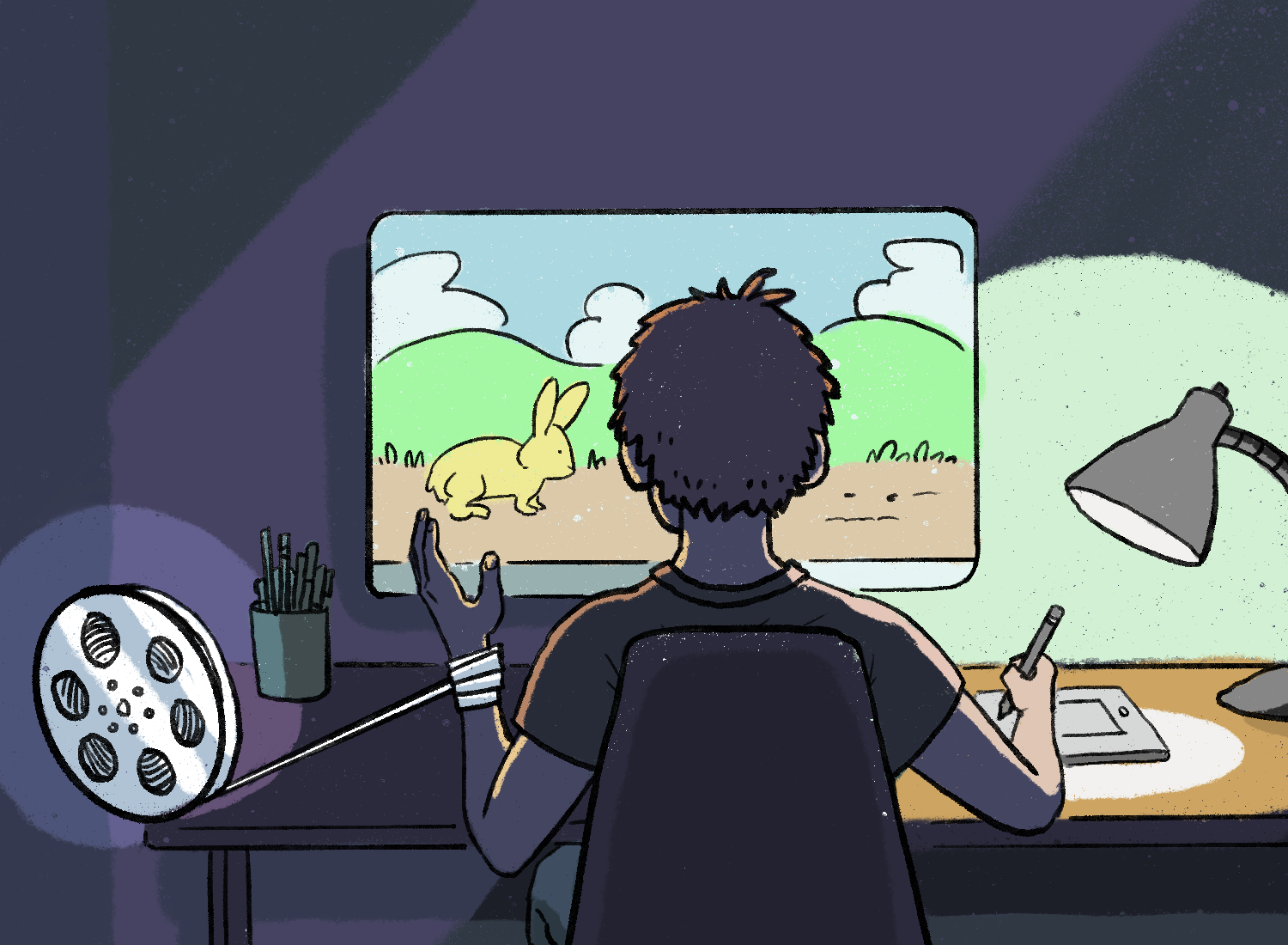Opinion: Disney’s growing monopoly breeds uniformity in animation

(Nathan Koketsu/Daily Bruin)
By Joice He
April 12, 2021 6:18 p.m.
This post was updated April 18 at 5:47 p.m.
Theme parks, news networks, cruise lines and more — Disney isn’t the fluffy, gentle children’s film studio it used to be.
In February, the multibillion-dollar company sent ripples through the industry by announcing it would be shutting down Blue Sky Studios, which is famous for the “Ice Age” and “Rio” franchises, because of “economic realities.”
When the Walt Disney Company acquired Blue Sky Studios in 2019, along with the rest of Fox, many people voiced fears about the consequences of Disney’s growing monopoly on the animation industry. And with the shutters being drawn on Blue Sky Studios, those fears seem to have been validated.
For perspective, the company’s holdings currently include big names like Pixar, Walt Disney Animation Studios, Hulu and ABC, just to name a few. It also owns the Marvel Cinematic Universe, Star Wars and Indiana Jones, three of the highest-grossing American film franchises ever, and the Fox deal means it stands to profit from movies like “Avatar,” “Fight Club” and “Anastasia,” the last of which was created for the express purpose of challenging Disney’s dominion over “princess” films.
Disney fan or not, that should raise some eyebrows.
The closer Disney comes to a monopoly of the industry, the more it threatens the viability of new stories and cheapens the quality of entertainment in an industry that relies on creative diversity to thrive.
“This is something that I think bears watching as we move forward,” said Chuck Sheetz, an animation professor at UCLA.
And that applies to all Bruins – not just those who are interested in the film industry. After all, monopoly creates uniformity, which would affect the film experience itself.
Disney movies aren’t bad — far from it. Its production quality is top-notch, with great music and a recognizable 3D animated art style. However, Disney has been releasing fewer and fewer movies over time, and over the past decade, it’s recycled nearly every old animated classic to spawn a host of live-action remakes.
Also, Disney movies look the same. That’s not inherently bad, but a homogenous art style across the industry, no matter how good it is, stifles the inherent diversity of art.
Jaden Ji, a first-year biology student and an artist, pointed out that in 2004, Disney closed its last remaining 2D animation studio in Florida, responsible for producing “Mulan” and “Brother Bear.”
“(Now) they completely focus on 3D animation,” Ji said. “I feel like that’s such a waste because 2D animation has come a long way.”
It’s hard not to look at 2D masterpieces like The SPA Studios’ “Klaus,” or Sony Animation’s masterful emulation of the comic book art style in “Spider-Man: Into the Spider-Verse,” and feel a sense of loss that most mainstream animated feature films have become so uniform in comparison.
“There needs to be more diversity and competition, specifically in Western animation,” said Courtney Fortier, a fourth-year psychobiology student who is a member of the UCLA art club Fresh Productions and a former illustrator for the Daily Bruin. “You need competition to breed creativity, and if Disney monopolizes every animation studio, there’s a limit on the kind of material they’re going to put out.”
Art style aside, Disney is infamously bad at representation – namely LGBTQ+ representation. Despite constantly hyping its newest groundbreaking character, Disney has produced virtually nothing of high quality.
Disney’s abysmal lineup of LGBTQ+ characters includes a mentioned same-sex partner from an unnamed character in “Avengers: Endgame,” a lesbian kiss in the corner of a crowd shot in “Star Wars: The Rise of Skywalker” and a lesbian cop from “Onward” who drew criticism from the LGBTQ+ community for poor character design and tone-deafness.
To rub salt in the wound, Blue Sky was only 10 months away from finishing “Nimona,” an adaption of Noelle Stevenson’s fantasy graphic novel featuring LGBTQ+ leads, before its shutdown.
Disney likely doesn’t want to put itself at risk in countries with strict laws against LGBTQ+ media. But with so much of the entertainment industry consolidated under Disney’s name, the chances for unconventional, new stories — including LGBTQ+ stories — to break into mainstream animated movies are greatly lessened.
Those interested in entering the industry may find the stories they’re allowed to tell are homogenous or may run into walls trying to include characters that look or experience love and gender like they do.
Blue Sky Studios was a successful animation studio with its own distinct style. Without Disney’s intervention, it would have likely continued to release films for a long time.
Granted, there are still places like Illumination, Paramount and Warner Brothers. However, Disney is big enough that it can afford to buy out most of its competition. The lack of any real threat means Disney doesn’t need to produce as many films, nor does it need to take creative risks. That can be devastating for an industry that thrives on pushing boundaries.
Not all Bruins are going into film, but we do all consume entertainment one way or another. A Disney monopoly would affect the caliber of that experience for everyone.
It would create a whole new world, and it wouldn’t be a pretty one.

